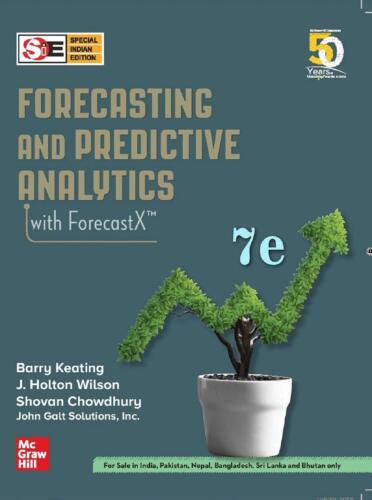Your cart is currently empty!
Tag: Forecasting

Training Recurrent Neural Networks for Time Series Forecasting
Recurrent Neural Networks (RNNs) have gained popularity in recent years for their ability to effectively model sequential data, making them particularly well-suited for time series forecasting tasks. Training RNNs for time series forecasting involves several key steps that must be carefully considered to ensure optimal performance and accuracy.The first step in training an RNN for time series forecasting is to prepare the data. Time series data typically consists of a sequence of observations recorded at regular intervals over time. This data must be preprocessed and formatted in a way that the RNN can effectively learn patterns and make accurate predictions. This may involve normalizing the data, splitting it into training and testing sets, and creating input-output pairs for the model to learn from.
Once the data is prepared, the next step is to choose an appropriate RNN architecture. There are several types of RNNs that can be used for time series forecasting, including basic RNNs, Long Short-Term Memory (LSTM) networks, and Gated Recurrent Unit (GRU) networks. Each type of RNN has its own advantages and disadvantages, so it is important to select the architecture that best suits the specific forecasting task at hand.
After selecting an RNN architecture, the model must be trained using the training data. During training, the RNN learns to make predictions based on the input data and adjust its weights and biases to minimize the error between the predicted and actual values. This process typically involves feeding the input data into the RNN, calculating the loss between the predicted and actual values, and updating the model parameters using an optimization algorithm such as gradient descent.
It is important to monitor the training process and evaluate the model’s performance regularly to ensure that it is learning effectively and making accurate predictions. This may involve tracking metrics such as loss, accuracy, and validation error, and adjusting the model’s hyperparameters as needed to improve performance.
Once the RNN has been trained and evaluated, it can be used to make predictions on new, unseen data. The model takes the input time series data and generates forecasts for future time steps based on the patterns it has learned during training. These forecasts can be evaluated using metrics such as mean squared error or mean absolute error to assess the accuracy of the model’s predictions.
In conclusion, training RNNs for time series forecasting involves several key steps, including data preparation, selecting an appropriate architecture, training the model, monitoring performance, and evaluating predictions. By following these steps carefully and optimizing the model’s hyperparameters, it is possible to build an effective RNN that can accurately forecast future values in time series data.
#Training #Recurrent #Neural #Networks #Time #Series #Forecasting,rnn
How Recurrent Neural Networks are Revolutionizing Time Series Forecasting
Time series forecasting is a critical aspect of many industries, from finance to weather prediction to supply chain management. Being able to accurately predict future trends based on past data can give organizations a competitive edge and help them make informed decisions.One of the most exciting developments in time series forecasting in recent years has been the use of recurrent neural networks (RNNs). RNNs are a type of artificial neural network that is designed to handle sequential data, making them particularly well-suited for time series forecasting.
Unlike traditional feedforward neural networks, which process data in a strict linear fashion, RNNs have the ability to remember past information and use it to make predictions about future data points. This makes them ideal for tasks where the order of data is important, such as predicting stock prices or forecasting sales trends.
One of the key features of RNNs is their ability to capture long-term dependencies in data. This is achieved through the use of “memory cells” within the network, which store information about past data points and use it to inform predictions about future data.
Another major advantage of RNNs is their flexibility in handling different types of time series data. Whether the data is evenly spaced or irregularly spaced, RNNs can adapt and learn the underlying patterns to make accurate forecasts.
In addition, RNNs can also be combined with other deep learning techniques, such as attention mechanisms and convolutional neural networks, to further improve forecasting accuracy. These hybrid models can leverage the strengths of each individual technique to produce more robust and reliable predictions.
Overall, the use of recurrent neural networks in time series forecasting has revolutionized the field, allowing organizations to make more accurate predictions and better anticipate future trends. As the technology continues to evolve and improve, we can expect to see even more impressive results in the years to come.
#Recurrent #Neural #Networks #Revolutionizing #Time #Series #Forecasting,rnn
Exploring the Applications of LSTM in Time Series Forecasting
Long Short-Term Memory (LSTM) is a type of recurrent neural network (RNN) that has gained popularity in recent years for its ability to capture long-term dependencies in sequential data. This makes it particularly well-suited for time series forecasting, where the goal is to predict future values based on past observations.One of the key advantages of LSTM is its ability to remember information over long periods of time. Traditional RNNs struggle with this task because they suffer from the vanishing gradient problem, which makes it difficult for them to learn from long sequences of data. LSTM overcomes this limitation by introducing a memory cell that can store information over multiple time steps, allowing it to retain important patterns and dependencies in the data.
In the context of time series forecasting, LSTM can be used to predict future values based on historical data. By feeding past observations into the network and training it to predict the next value in the sequence, LSTM can learn to capture complex patterns and relationships in the data, making it a powerful tool for forecasting future trends.
There are many applications of LSTM in time series forecasting, including predicting stock prices, weather patterns, and consumer demand. In the financial industry, LSTM models are used to predict stock prices and market trends, helping investors make informed decisions about when to buy or sell stocks. In meteorology, LSTM can be used to forecast weather patterns and predict natural disasters, allowing authorities to take proactive measures to mitigate the impact of extreme weather events. In retail, LSTM models can be used to forecast consumer demand and optimize inventory management, helping businesses reduce costs and improve customer satisfaction.
Overall, LSTM has proven to be a valuable tool for time series forecasting, allowing researchers and practitioners to extract valuable insights from sequential data and make accurate predictions about future trends. As the field of deep learning continues to evolve, LSTM is likely to remain a key technology for forecasting time series data and unlocking new opportunities for data-driven decision-making.
#Exploring #Applications #LSTM #Time #Series #Forecasting,lstm
The Power of Recurrent Neural Networks in Time Series Forecasting
Time series forecasting is a crucial aspect of many industries, as it allows businesses to anticipate future trends and make informed decisions. Traditional forecasting methods often rely on statistical models, but in recent years, recurrent neural networks (RNNs) have emerged as a powerful tool for forecasting time series data.RNNs are a type of artificial neural network designed to recognize patterns in sequential data, making them well-suited for time series forecasting tasks. Unlike traditional neural networks, which process input data in a fixed order, RNNs have loops in their architecture that allow them to retain information about previous inputs. This makes them particularly effective for tasks that involve sequential data, such as time series forecasting.
One of the key advantages of RNNs in time series forecasting is their ability to capture long-term dependencies in the data. Traditional forecasting methods often struggle to capture complex patterns in time series data, particularly when there are non-linear relationships or seasonal trends present. RNNs, on the other hand, can learn from past observations and use this information to make more accurate predictions about future values.
Another advantage of RNNs is their flexibility and adaptability. RNNs can be trained on a variety of different time series data, ranging from financial data to weather patterns to stock prices. This versatility makes them a valuable tool for a wide range of industries, from finance to healthcare to retail.
In addition to their accuracy and versatility, RNNs also offer the advantage of being able to handle missing data and irregular time intervals. Traditional forecasting methods often struggle with missing data or irregular time intervals, but RNNs are able to work with incomplete data sets and varying time intervals, making them a robust choice for real-world forecasting tasks.
Overall, the power of recurrent neural networks in time series forecasting cannot be overstated. Their ability to capture complex patterns, adapt to different data sets, and handle missing data make them a valuable tool for businesses looking to make more accurate and informed decisions based on historical data. As the field of artificial intelligence continues to advance, RNNs are likely to play an increasingly important role in time series forecasting, revolutionizing the way businesses predict future trends and plan for the future.
#Power #Recurrent #Neural #Networks #Time #Series #Forecasting,rnn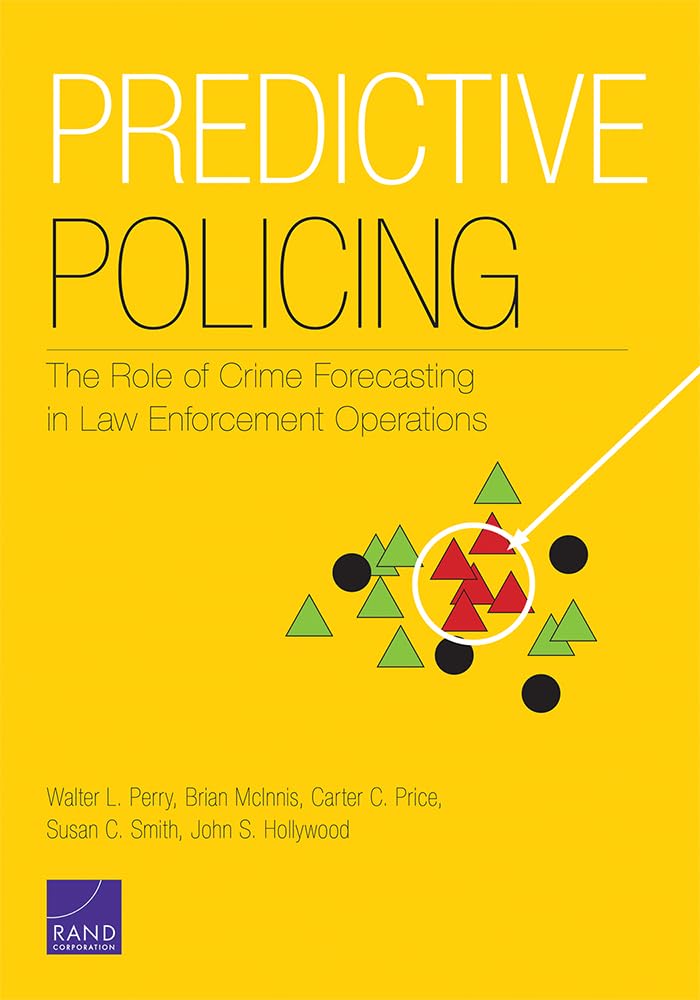
Predictive Policing: The Role of Crime Forecasting in Law Enforcement Operations
Price: $39.95
(as of Dec 28,2024 09:05:25 UTC – Details)
Publisher : RAND Corporation (October 15, 2013)
Language : English
Paperback : 186 pages
ISBN-10 : 0833081489
ISBN-13 : 978-0833081483
Item Weight : 13.6 ounces
Dimensions : 7 x 0.5 x 10 inches
Predictive Policing: The Role of Crime Forecasting in Law Enforcement OperationsPredictive policing has become an increasingly popular tool for law enforcement agencies looking to prevent crime before it happens. By using advanced analytics and data-driven algorithms, police departments are able to forecast where and when crimes are likely to occur, allowing them to deploy resources more effectively and efficiently.
Crime forecasting has the potential to revolutionize the way law enforcement operates, allowing agencies to prioritize their efforts in areas where crime is most likely to happen. This proactive approach not only helps to prevent crime, but also leads to a more targeted and strategic response to criminal activity.
Critics of predictive policing argue that it can lead to biases and discrimination, as algorithms may be influenced by historical data that reflects existing disparities in policing practices. However, proponents argue that when used responsibly and in conjunction with other crime-fighting strategies, predictive policing can be a valuable tool in the fight against crime.
As technology continues to evolve, the role of crime forecasting in law enforcement operations will only continue to grow. It is important for agencies to carefully consider the ethical implications of using predictive policing and to ensure that they are using these tools in a fair and unbiased manner. Ultimately, the goal of predictive policing is to make communities safer and to improve the effectiveness of law enforcement efforts.
#Predictive #Policing #Role #Crime #Forecasting #Law #Enforcement #Operations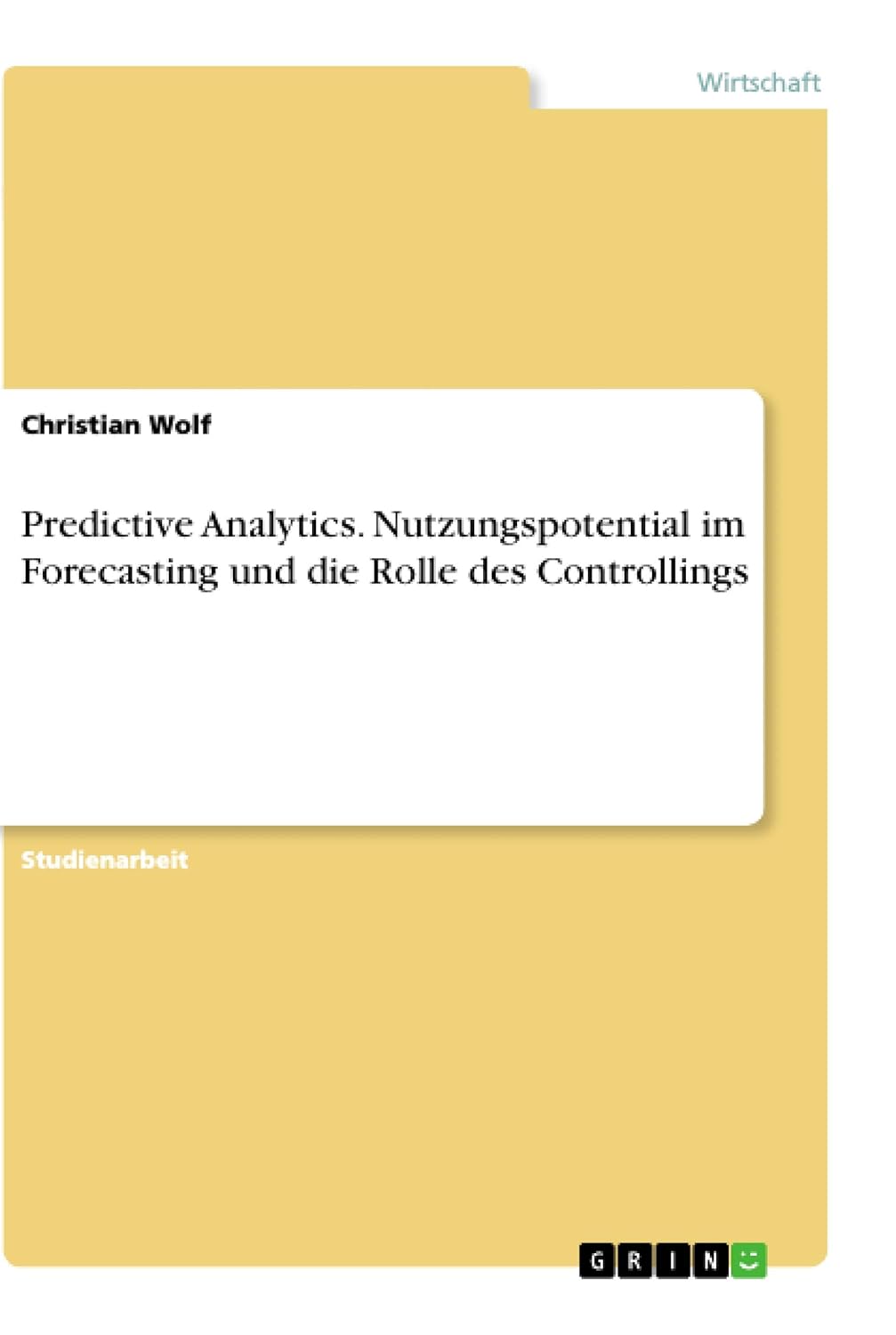
Predictive Analytics. Nutzungspotential im Forecasting und die Rolle des Controllings (German Edition)
Price: $39.50
(as of Dec 28,2024 08:08:04 UTC – Details)
Publisher : Grin Verlag (July 30, 2019)
Language : German
Paperback : 34 pages
ISBN-10 : 3668965536
ISBN-13 : 978-3668965539
Item Weight : 2.08 ounces
Dimensions : 5.83 x 0.08 x 8.27 inches
Vorhersageanalytik, auch bekannt als Predictive Analytics, hat in den letzten Jahren in verschiedenen Branchen an Bedeutung gewonnen. Unternehmen nutzen diese fortschrittliche Technologie, um zukünftige Trends und Ereignisse vorherzusagen und fundierte Entscheidungen zu treffen.Im Bereich des Forecastings kann Predictive Analytics eine entscheidende Rolle spielen. Durch die Analyse von historischen Daten und dem Einsatz von Algorithmen können Unternehmen präzise Prognosen für Umsätze, Kosten und andere wichtige Kennzahlen erstellen. Dies ermöglicht es Managern, frühzeitig auf Veränderungen zu reagieren und ihre Geschäftsstrategien anzupassen.
Das Controlling spielt eine wichtige Rolle bei der Implementierung von Predictive Analytics im Forecasting-Prozess. Controller können dabei helfen, die relevanten Daten zu identifizieren, die richtigen Modelle auszuwählen und die Genauigkeit der Vorhersagen zu überwachen. Darüber hinaus können sie die Ergebnisse interpretieren und Empfehlungen für das Management ableiten.
Insgesamt bietet Predictive Analytics ein großes Nutzungspotential im Forecasting und kann Unternehmen dabei helfen, ihre Wettbewerbsfähigkeit zu steigern und bessere Entscheidungen zu treffen. Es ist wichtig, dass Unternehmen das volle Potenzial dieser Technologie erkennen und sie gezielt im Controlling einsetzen, um langfristigen Erfolg zu gewährleisten.
#Predictive #Analytics #Nutzungspotential #Forecasting #und #die #Rolle #des #Controllings #German #Edition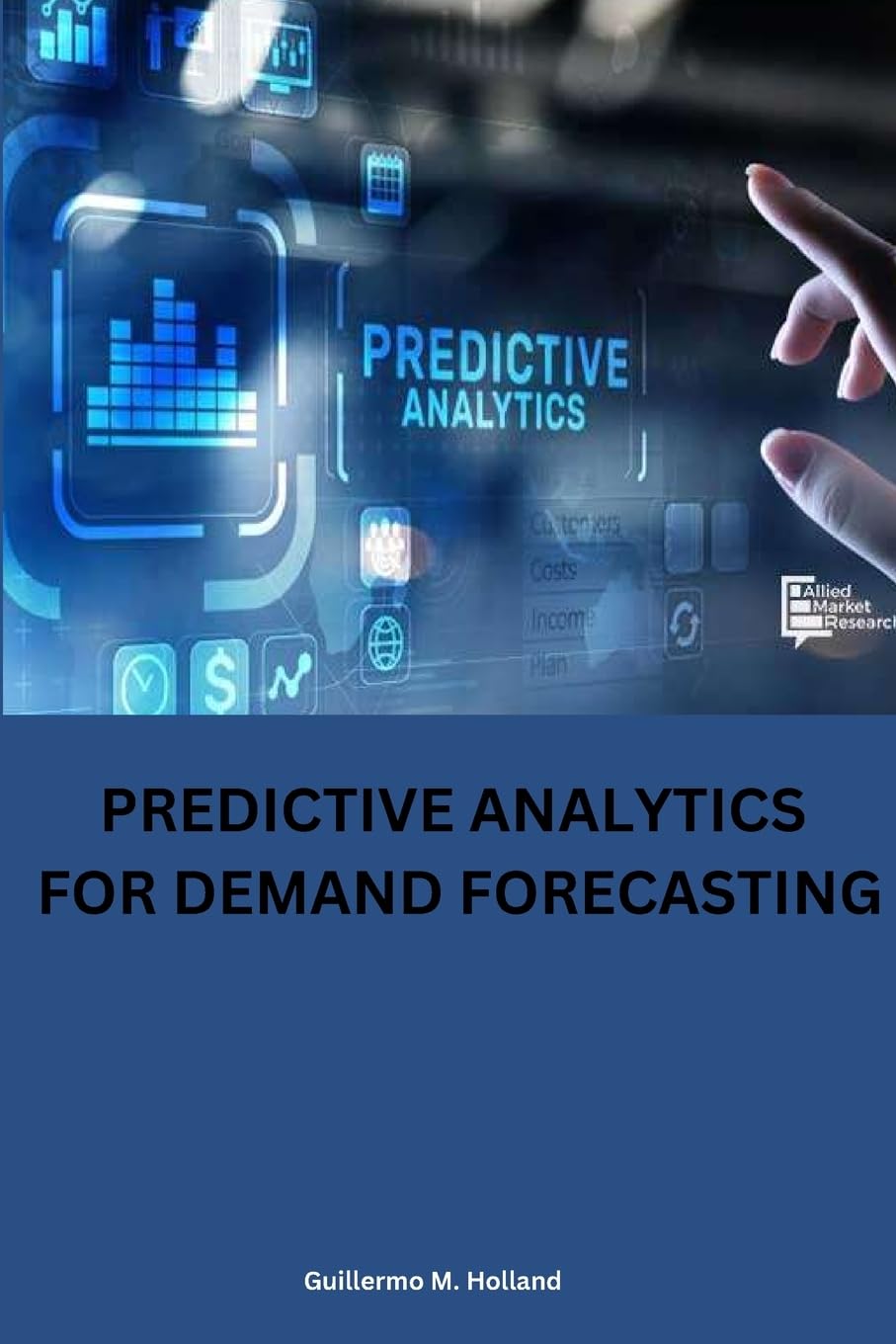
Predictive analytics for demand forecasting
Price:$29.00– $24.03
(as of Dec 28,2024 03:32:50 UTC – Details)
Publisher : Guillermo M. Holland (May 6, 2023)
Language : English
Paperback : 124 pages
ISBN-10 : 7419434891
ISBN-13 : 978-7419434893
Item Weight : 6.2 ounces
Dimensions : 6 x 0.26 x 9 inches
Predictive analytics for demand forecasting is revolutionizing the way businesses plan and strategize for the future. By utilizing historical data, market trends, and other relevant information, companies can accurately predict customer demand for their products and services.With the help of advanced algorithms and machine learning techniques, predictive analytics can provide valuable insights into consumer behavior, purchasing patterns, and preferences. This allows businesses to make informed decisions about inventory management, production scheduling, and marketing strategies.
By leveraging predictive analytics for demand forecasting, companies can optimize their supply chain, reduce costs, and improve customer satisfaction. This powerful tool enables businesses to stay ahead of the competition and adapt quickly to changing market conditions.
In today’s fast-paced and highly competitive business environment, predictive analytics for demand forecasting is a game-changer. By harnessing the power of data and analytics, companies can gain a competitive edge and drive sustainable growth. Embracing this technology is essential for businesses looking to thrive in the digital age.
#Predictive #analytics #demand #forecasting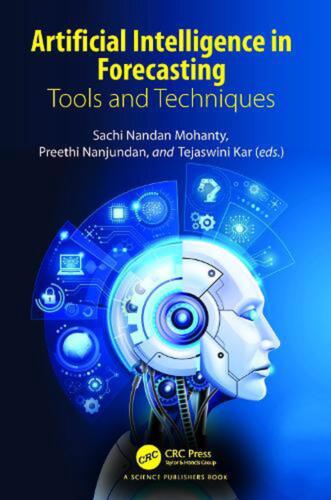
Artificial Intelligence in Forecasting: Tools and Techniques by Sachi Mohanty Ha

Artificial Intelligence in Forecasting: Tools and Techniques by Sachi Mohanty Ha
Price : 219.53
Ends on : N/A
View on eBay
Artificial Intelligence in Forecasting: Tools and Techniques by Sachi Mohanty HaIn today’s rapidly evolving business landscape, accurate forecasting is crucial for making informed decisions and staying ahead of the competition. With the rise of artificial intelligence (AI) technologies, businesses now have access to advanced tools and techniques that can significantly improve their forecasting capabilities.
Sachi Mohanty Ha, a seasoned expert in AI and machine learning, has been at the forefront of developing cutting-edge forecasting solutions for businesses across various industries. In this post, we will explore some of the key tools and techniques that Sachi Mohanty Ha has successfully implemented in forecasting models.
One of the most powerful AI tools for forecasting is machine learning, which involves training algorithms to analyze historical data and identify patterns that can be used to predict future outcomes. Sachi Mohanty Ha has utilized machine learning algorithms such as neural networks, decision trees, and random forests to build highly accurate forecasting models for his clients.
In addition to machine learning, Sachi Mohanty Ha has also leveraged natural language processing (NLP) techniques to extract valuable insights from unstructured data sources such as social media, customer reviews, and news articles. By analyzing this data, businesses can gain a deeper understanding of market trends and consumer behavior, allowing them to make more informed forecasts.
Another key technique that Sachi Mohanty Ha has employed is deep learning, a subset of machine learning that involves training neural networks with multiple hidden layers. Deep learning models can capture complex relationships in data and make more accurate predictions, making them ideal for forecasting tasks that involve large and diverse datasets.
Overall, artificial intelligence has revolutionized the field of forecasting, enabling businesses to make more accurate predictions and better decisions. With the expertise of professionals like Sachi Mohanty Ha, businesses can harness the power of AI tools and techniques to stay ahead of the curve in today’s competitive market environment.
#Artificial #Intelligence #Forecasting #Tools #Techniques #Sachi #Mohanty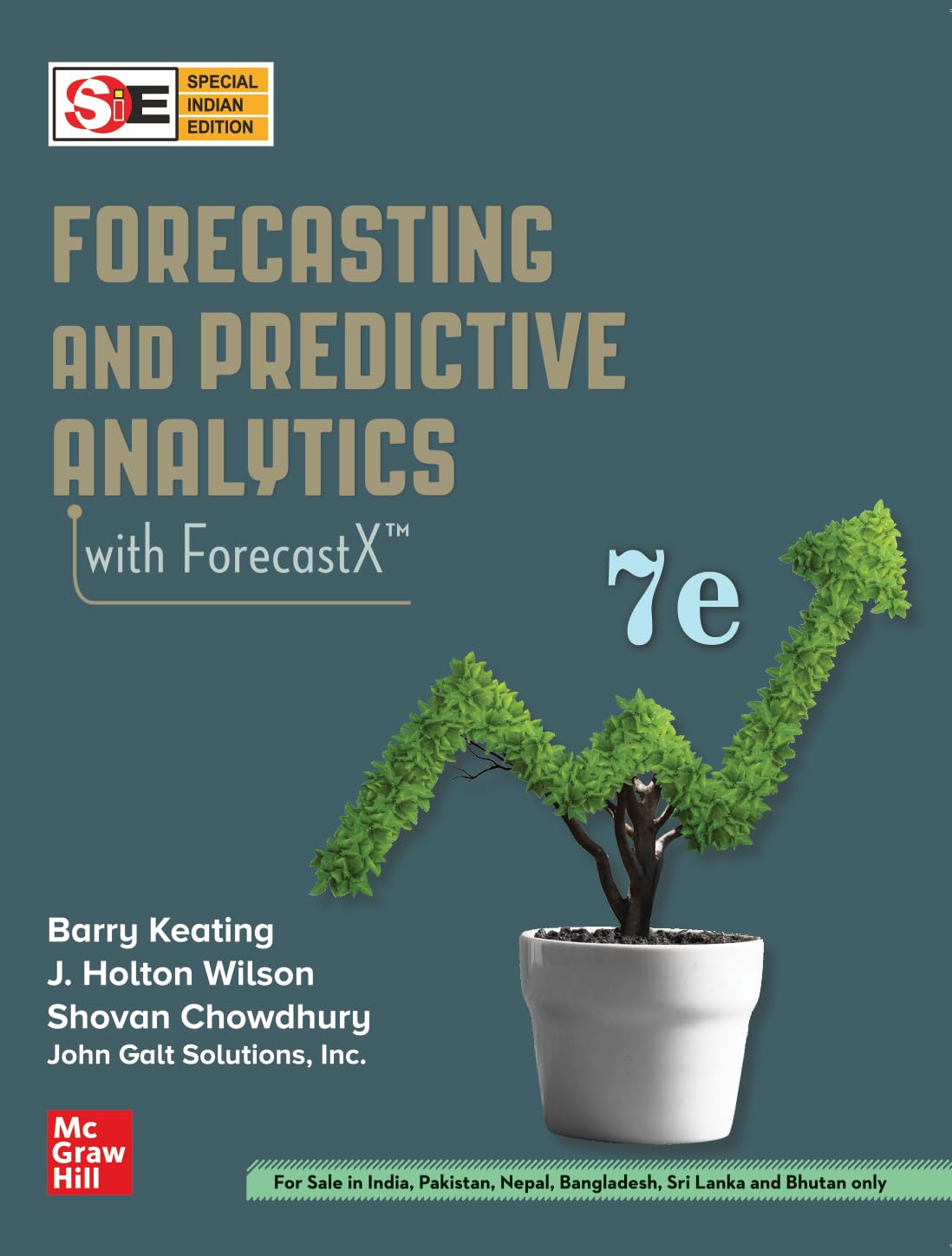
Forecasting and Predictive Analytics with ForecastX
Price: $30.89
(as of Dec 27,2024 10:14:31 UTC – Details)
Language : English
ISBN-10 : 9390219450
ISBN-13 : 978-9390219452
Item Weight : 1.68 pounds
Dimensions : 9.37 x 7.28 x 0.91 inches
Forecasting and predictive analytics are crucial tools for businesses looking to make informed decisions and plan for the future. With ForecastX, companies can harness the power of advanced statistical models and algorithms to predict future trends and outcomes with accuracy.ForecastX offers a comprehensive platform that allows users to input historical data, analyze patterns and trends, and generate forecasts for various business metrics such as sales, inventory levels, and customer demand. By incorporating factors such as seasonality, trend analysis, and historical patterns, ForecastX can provide businesses with valuable insights into potential future scenarios.
The ability to accurately forecast and predict future outcomes can help businesses optimize their operations, allocate resources efficiently, and make informed decisions that drive growth and profitability. With ForecastX, companies can stay ahead of the curve and proactively address challenges and opportunities in today’s fast-paced business environment.
Whether you are a small business looking to improve inventory management or a large corporation seeking to enhance sales forecasting, ForecastX can help you harness the power of predictive analytics to drive success. Don’t leave your future to chance – leverage the power of ForecastX to unlock valuable insights and make informed decisions that drive your business forward.
#Forecasting #Predictive #Analytics #ForecastX
